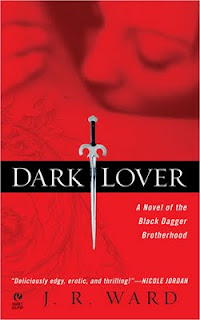So we writers can sometimes be a superstitious bunch. We make up stories for a living and many times that creative thinking bleeds into our real life. And one way we do this is by placing some mythical or magical significance on our "process."
Shh...don't disturb the Process. Don't try new things. This is working for you. You ARE a (insert appropriate designation: a plotter, a panster, a fast drafter, an edit-as-I-go writer, a morning writer, a midnight oil burner.)
I know I've done this. I read writing craft books like they're going out of style, but I quickly discard suggestions that may go against my Process. I can't write shit down on notecards! *gasp* That will send my pantsing brain into a tailspin. My muse will curl up into the fetal position and weep in a corner!
Okay, maybe you aren't as melodramatic as I am. But I know I'm not the only one who is scared to change things around too much because it might just suddenly steal our ability to write. Like our creativity is made of some delicate blown glass that will shatter if jostled.
Here are the things I've told myself: I'm a slow writer. A thousand words a day is about what I can do. I'm a panster. Planning ahead will kill my passion for the story. I will hit writer's block at some point in every one of my stories. I'm a morning writer. I must blog brilliantly every day and must be on Twitter all the time.
Well, guess what happened though? I sold two more books which have tighter deadlines than I've ever worked under before. My kidlet switched preschools and now goes in the afternoon instead of the mornings. And I fell in love with the Save The Cat! technique.
My Process has been tossed into a blender. Everything I was doing before isn't going to fit into this new setup. I had to figure out something different.
So for book 3, FALL INTO YOU, I've changed up the sacred process. I'm calling it Slow Writer Reform School.
Slow Writer Reform School Procedures
- I've dialed back my online time to free up more hours for writing. I don't need to be constantly available online.
- I wrote the synopsis of this book before starting to write it. (Something you have to do, btw, if you want to sell on proposal.)
- I plotted out my beats using Save The Cat!
- I wrote out a sentence for each of my major scenes and turning points on (ack!) index cards
- I'm holding myself to a 1k a day minimum goal
- I'm writing in pockets of time I usually wasted doing something unimportant
- I'm am not tying my ability to write to a certain time of the day
- And when I want to make a major change in the story, I just make a note and don't rewrite the whole thing right then.
And you know what? In seven days, I've written about 12,000 words. Now that may not seem like a lot to you fast drafters or Nano-ers (congrats, btw, to those of you who won Nano), but for me, that is a revelation. I even had an afternoon where I wrote 3200.
And it's been fun. Refocusing myself has helped me remember how awesome it is to get lost in your story and to be itching to get back to it. And having those simple plot points already sketched out has kept me moving forward instead of taking a day off to figure out what happens next.
So if you are feeling stuck or not as productive, consider throwing a few curve balls to your sacred Process. If it doesn't work, you can always go back. You never know what you might find.
And if you need more inspiration, there have been a number of posts recently about how others have sped up their writing:
- How I Went From 2k to 10k a Day by Rachel Aaron (I linked to this last Friday, but worth a read if you haven't looked at it.)
- Writers Must Write First by Susan Kay Quinn
- The 10,000 Word Day by Zoe Winters (found via Susan's blog above)
2016 Update: Practice does make you faster. Now I have a regular goal of 10k a week (2k a weekday) when I'm in drafting mode. And though I haven't had 10k days yet, I have had a few 7k days.
So how about you? Do you see your Process as precious? Have you told yourself that you can only do things a certain way? What have you changed up in your process that's helped you? What hasn't worked?




